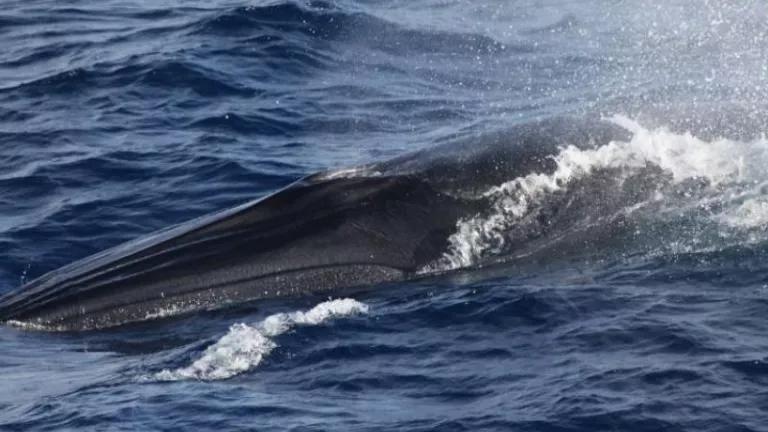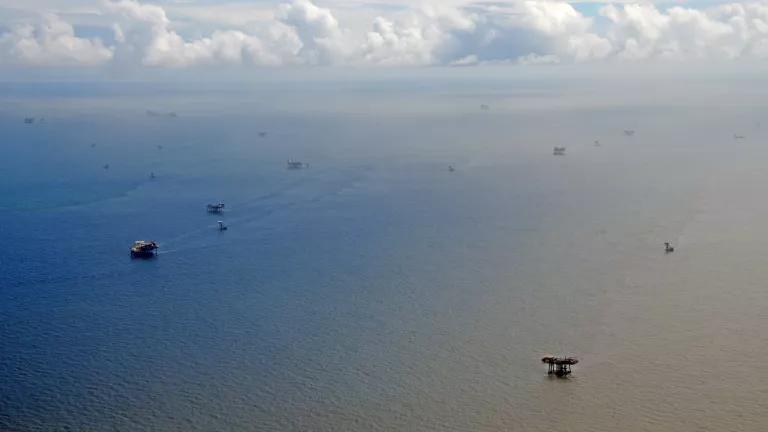
The vast expanse of ocean that lies beyond any one country’s national waters comprises nearly two-thirds of the ocean and almost half the planet. These waters, the high seas, contain vast but not limitless supplies of fish, act as a heat and carbon sink to moderate our climate, and provide valuable ecosystems for wildlife.
Yet the governance structures currently in place to moderate activities on the high seas lack basic provisions to conserve and sustainably use the wildlife in those waters. As climate change impacts accrue, plastic and other types of pollution gather, and new activities put increasing pressure on the ecosystems in the high seas, improving the conservation laws of the high seas has never been more pressing.
Fortunately, this past year at the United Nations (UN), countries made significant strides toward developing a new treaty to fill in these governance gaps. During negotiating sessions, at the first ever UN Oceans Conference, and in discussions within numerous capitals around the world, governments vocalized the importance of the high seas and the need to protect them. In a strong finish to the year’s discussions, governments on Christmas Eve at the UN adopted a resolution to officially begin formal negotiations to develop a treaty to protect the high seas. This is a huge step that paves the way for stronger safeguards and a healthier ocean.
PrepCom Progress
While 2017 saw considerable progress in better protecting the high seas, discussions on this topic have been under way for a long time: governments at the UN have been calling for better high seas protections for over a decade. They reached a milestone in 2015 when they agreed to convene four sessions of a treaty preparatory committee (PrepCom) to discuss what elements a high seas treaty should contain. The third and fourth convenings of the PrepCom, in which over 100 governments participated, took place in 2017.
During the fourth PrepCom session in July, governments agreed that during the four discussion sessions they had consensus on enough basic treaty elements—like the need for marine protected areas in the high seas and for activities to be vetted before being allowed to go forward—that they were ready to move forward to more formal diplomatic consultations.
On Friday July 21 at 9:10 pm, after hours of lengthy consultations, consensus had been reached and all governments unanimously agreed to move the meetings forward to the next step of an intergovernmental conference, where the treaty text will be negotiated.
The fourth and final convening of the preparatory committee resulted in governments agreeing unanimously to move discussions forward in an intergovernmental conference. The negotiations lasted into the evening, with countries discussing what specific language they could agree to, before the chair of the negotiations gaveled in conclusion.
Next Step: Intergovernmental Conference
Governments in July agreed to convene an intergovernmental conference, but the details on how those negotiations will be held has to be agreed upon before they start. During the fall at the UN, governments negotiated a resolution that set out rules on when and where those meetings would take place, who would be allowed to participate, and what the process should look like for treaty development and adoption.
The final resolution that was adopted on Sunday fills me with optimism that we will make even greater strides toward protecting the high seas in 2018 and beyond. More than 140 nations co-sponsored the resolution, which contains strong provisions allowing nongovernmental organizations like NRDC and other members of the High Seas Alliance to participate in negotiations. It sets the first negotiating session in September 2018, which is soon enough that we will be able to maintain the momentum generated this year. It also allows treaty adoption by voting if efforts to reach consensus have been exhausted.
We still have a long way to go to ensure that the ocean is fully protected but the progress made in 2017 put us a big step forward on that path.




